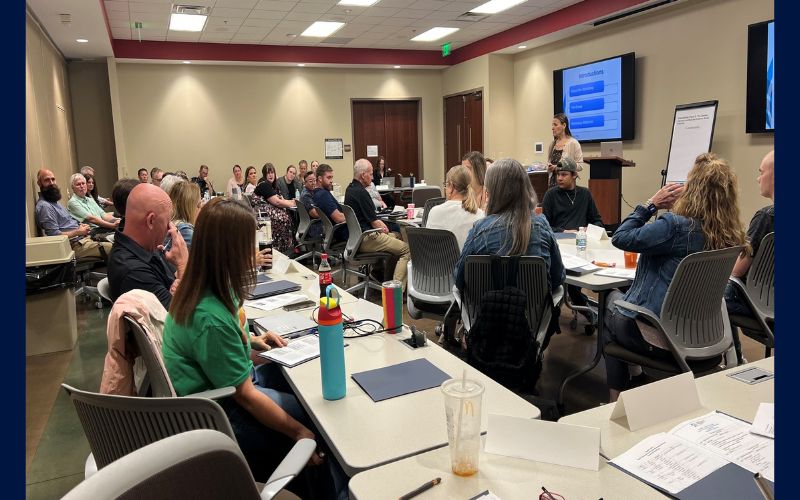Logan County leaders are working together to improve how the community helps young people in the justice system who also struggle with mental health and substance use problems.
Local professionals from mental health, addiction services, and the juvenile justice system recently took part in a workshop called “Sequential Intercept Mapping”, hosted by Ohio’s Criminal Justice Coordinating Center of Excellence.
The goal was to create a clear plan for how to better identify and support youth with these challenges and keep them from getting stuck in the justice system.
“This kind of mapping helps communities think through what’s working, what’s not, and where we can step in to help people earlier,” said Dr. Mark R. Munetz with the Center of Excellence. “It’s all about solving problems together and making the system work better.”
During the workshop, Logan County leaders created a detailed map showing the typical path a young person takes through the system—from arrest, to court, to detention—and discussed where help could be offered instead.
They also looked at how other communities have handled similar issues and what changes might work locally.
The Logan County Planning Committee prepared for the event with a conference call back on May 1, 2025.
Members of the committee include Sarah Ferguson, India Slayback, Jason Moyer, Sarah Lewis, Doug Steiner, Sarah Crumm, Ceci Yelton, Erica James, Aidan Comstock, Joe Freyhof, Emily Alexander, LJ Henderson, Cassie Branan, Magistrate Sarah Warren, and Judge Natasha Kennedy.
The work is urgent.
Nationwide, more than 600,000 kids are placed in juvenile detention each year, and about 70,000 are in youth correctional facilities on any given day.
Studies show that about two-thirds of those youth have a mental health disorder, and most of them also struggle with substance use.
Nearly 30% have serious conditions that need treatment right away.
Many also have a history of trauma.
Logan County’s goal is to stop the cycle of repeat justice involvement by helping kids get the right services at the right time.
That includes keeping youth out of the justice system when possible and making sure those who are already involved can connect with care, support, and a better path forward.















